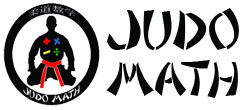How to Fight Your Kid’s Math Anxiety
By Manoush Zomorodi Manoush Zomorodi is the host and managing editor of New Tech City on WNYC, a public radio station in New York City. Fear of math is a real thing. I thought I was the only a neurotic freak who struggled with fractions in third grade, avoided taking calculus in high school, and dropped out of physics for non-science majors in college. But it turns out an emotional reaction to all things numeric now has an official label: math anxiety. The roots of “math anxiety”Mark Ashcraft heads the psychology department at the University of Las Vegas and has made his name researching math anxiety. “We’ve even seen it in very young children, say first or second grade. But typically math anxiety starts to show up along the sixth grade, seventh grade level,” Ashcraft told me. What starts as pre-test jitters festers into a full-blown belief that you just can’t do math. At all. Ashcraft says this defeatist attitude affects all kinds of life decisions, like choosing a major because it requires no math. Or, in my case, never balancing my checkbook. There is also evidence that little girls learn math anxious attitudes from female teachers. Meanwhile, studies have shown that it’s the anxiety itself, not any innate disability, that prevents students from conquering math. How the body affects the mindAnxiety hampers us from thinking, our brain just shuts down. This isn’t a new concept. As a society we are fascinated with finding ways of hacking the mind-body connection. It’s why yoga is mainstream and meditation is on the ascent. And why Harvard Business School professor Amy Cuddy’s TED Talk,”Your body language shapes who you are,” has been viewed more than 17 million times. Cuddy is a social psychologist who studied the hormones people produce when they are in what she calls “power poses” and “low-power poses.” Stand up straight with arms outstretched and after two minutes, Cuddy found you produce more of the confidence hormone testosterone and less of the stress hormone cortisol. Curl up into a fetal position or crouch over your cell phone and you’ll get less of the confidence hormone and more of the anxiety hormone. As a result of her research, here’s what Cuddy advises: Before you go into the next stressful evaluative situation, for two minutes, try doing this, in the elevator, in a bathroom stall, at your desk behind closed doors. That’s what you want to do. Configure your brain to cope the best in that situation. Get your testosterone up. Get your cortisol down. A game that links power-posing to mathSusan Isbister, the head NYU Polytechnic School of Engineering’s Game Innovation Lab, saw Cuddy’s talk and had a eureka moment. “I thought hey, math anxiety is a real problem with kids and if this power posing really works to increase confidence and help kids take risks, that would be fabulous,”…
Read More »Every Kid Needs a Champion
“I’ve learned that people will forget what you said, people will forget what you did, but people will never forget how you made them feel.” -Maya Angelou Rita Pierson, a teacher for 40 years, once heard a colleague say, “They don’t pay me to like the kids.” Her response: “Kids don’t learn from people they don’t like.’” A rousing call to educators to believe in their students and actually connect with them on a real, human, personal level. Watch Every Kid Needs a Champion. Rita F. Pierson, a professional educator since 1972, taught elementary school, junior high and special education. She was a counselor, a testing coordinator and an assistant principal. In each of these roles, she brought a special energy to the role — a desire to get to know her students, show them how much they matter and support them in their growth, even if it was modest. For the past decade, Pierson conducted professional development workshops and seminars for thousands of educators. Focusing on the students who are too often under-served, she lectured on topics like “Helping Under-Resourced Learners,”“Meeting the Educational Needs of African American Boys” and “Engage and Graduate your Secondary Students: Preventing Dropouts.” Pierson passed away in June 2013. “Every child deserves a champion — an adult who will never give up on them, who understands the power of connection, and insists that they become the best that they can possibly be.” “Teachers become great actors and great actresses. … We come to work when we don’t feel like it, and we’re listening to policy that doesn’t make sense — and we teach anyway.” “While you won’t like [all your students], the key is they can never, ever know it.” What do positive student-teacher relationships look like in the classroom? Teachers show their pleasure and enjoyment of students. Teachers interact in a responsive and respectful manner. Teachers offer students help (e.g., answering questions in timely manner, offering support that matches the children’s needs) in achieving academic and social objectives. Teachers help students reflect on their thinking and learning skills. Teachers know and demonstrate knowledge about individual students’ backgrounds, interests, emotional strengths and academic levels. Teachers seldom show irritability or aggravation toward students. Divers diseases can affect the muscles that can slow the flow of blood, cause erectile dysfunction. Currently more than half of men aged over 50 reported some degree of erectile dysfunctions. A general sexual complaint among men is the erectile dysfunction. Now many articles were published about http://finasteride.me/. Our article tell more about the evaluation of erectile dysfunction and “finasteride“. Questions, like “finasteride drug“, are linked variant types of soundness problems. Keep reading for a list of drugs that can cause side effects and what you can do to put an end to feasible side effects. Sometimes medical conditions or other medicaments may interact with Viagra. Before buying this generic, tell your…
Read More »Creating Your own Open-Ended Math Questions
There are times when you will want or need to create your own. One way to create new items is to change closed-ended questions into open-ended ones. In the examples following, notice how the revised questions are more conceptually oriented and require students to communicate their thinking processes: Original Question: Which of the following numbers are prime? 7, 57, 67, 117 Revised Question: Fred thinks that 57 and 67 are prime because they both end in 7, which is a prime number. Dick says he is wrong. Who is correct and why? My experience over the past 13 years in teaching has shown me that, in general, teachers do not have time to create a large number of open-ended questions. But when they do, there are certain “heuristics” that can help. Ask Students to Create a Situation or an Example That Satisfies Certain Conditions Questions of this type require students to recognize the defining characteristics of the underlying concept. Students must take what they know about a concept and apply it to create an example. (In each of the examples below the student is asked to create a number or some kind of mathematical object that satisfies certain criteria.) Sample Elementary-Level Questions Make a 4-digit even number using the digits below. Explain why your number is even. 3 6 7 1 5 _____ _____ _____ _____ Give an example of an event that has a probability of 0. Explain how you know the probability is 0. Draw a rectangle and label the sides so that the perimeter is between 19 and 20 units. Explain how you know the perimeter is greater than 19 and less than 20. Sample Middle School-Level Questions Identify three numbers whose greatest common factor is 5 and whose least common multiple is 180. Describe how you found the numbers. Create a set of data that would satisfy the following conditions: The set includes 7 data points. The range is 10 units. The mean is greater than the median. Show that your data set satisfies the conditions. Sample High School-Level Questions Write an irrational number whose square is smaller than itself. Explain why your number fits the criteria or argue that it is not possible to write such a number. Write a data set consisting of 10 numbers so that the range is twice the median. Show that your data set satisfies the criteria. Give the dimensions of a cone and a cylinder that have the same volume. Show that the two solids have the same volume. Write an equation of a circle that contains the points (-4, -3) and (6,1). Graph your circle and explain why its equation satisfies the given condition. Ask Students to Explain Who Is Correct and Why These types of items present two or more views of some mathematical concept or principle and the student has to decide which of the…
Read More »

 Judo Math motivates all students to take responsibility. There are no ability groups, just pacing groups. By the end of each discipline, everyone is a black belt rank, reinforcing the unity of the class.
Judo Math motivates all students to take responsibility. There are no ability groups, just pacing groups. By the end of each discipline, everyone is a black belt rank, reinforcing the unity of the class.  www.capjax.com
www.capjax.com